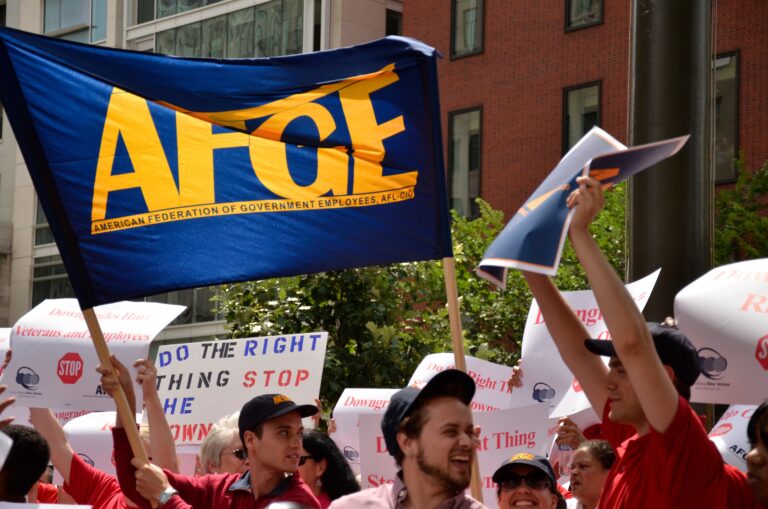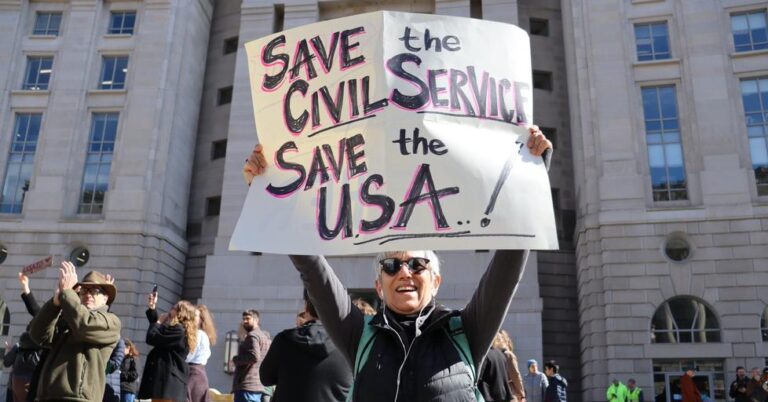
Andrew Strom is a union lawyer based in New York City. He is also an adjunct professor at Brooklyn Law School.
I used to think that disclosure laws had the potential to change corporate behavior. The idea is that if businesses have to publicly disclose what they are up to, then they will be shamed into changing their conduct. The problem is that much like the current President, corporate leaders seem increasingly immune from any sense of shame.
In the aftermath of the 2007-2008 financial crisis, Congress passed the Dodd-Frank Act to better regulate financial markets. That law included some measures to address excessive executive compensation. Back in 1978, CEOs at the largest firms were paid 30 times as much as the average worker. By 2007, even using the most conservative measurements, they were paid more than 200 times as much. Instead of directly regulating CEO pay, Congress required corporations to disclose the ratio between CEO pay and the pay of the corporation’s median employee. And another measure required companies to disclose the relationship between the company’s financial performance and executive compensation. If anyone thought these measures would actually rein in executive compensation, they were sorely mistaken.
This is the season when most publicly traded corporations have been releasing proxy statements in anticipation of their annual shareholder meetings. Corporate proxy statements contain detailed information about executive compensation, including disclosure of the perquisites provided to each firm’s five highest paid executives. To me, these disclosures mostly suggest that corporate boards are confident that no one pays any attention to this information. Consider the issue of CEOs using corporate jets for personal travel. Some companies not only allow this, but actually require the CEO to use a corporate aircraft for all personal air travel. Some of the companies that impose this requirement are Bank of America, CVS, Expedia, Lowe’s, Marriott, and Pay Pal. Typically, disclosure of this information will refer to “an independent security study” that justifies this requirement.
If you’re thinking that travel on commercial airlines doesn’t seem very dangerous since TSA carefully screens every passenger, you’re missing the point. When executives are allowed to fly on a corporate jet for personal travel, they have to treat the value of those flights as income. But, IRS regulations provide that “if an employee travels on a personal trip in an employer-provided aircraft for bona fide business-oriented security concerns, the employee may exclude the excess, if any, of the value of the flight over the amount the employee would have paid for the same mode of transportation, but for the bona fide business-oriented security concerns.” What this means in practice is that these “independent” security studies allow executives to report the value of these personal flights as half the amount they would have to declare without the security study. And, in most of these cases, the companies also require that the CEO’s spouse and children fly on the corporate jet, so the same tax rules apply to their flights. These savings are not insignificant. The companies disclose the value of these flights, and even with this substantial discount, the benefit can be worth over $500,000 per year.
Reading the fine print of executive compensation shows how one way that the rich get richer is that they don’t have to pay for things the same way that the rest of us do. When CEOs move to accept a new job, the company doesn’t just pay moving expenses. The company will often pay hundreds of thousands of dollars in relocation expenses that may include months of temporary housing, paying another entity to help sell the CEO’s old house, and additional money to pay the taxes on any of these amounts. Another standard perk offered to top executives is financial planning advice. You would think that if you were paid $20 million a year, you could afford to pay for your own financial planner. Similarly, many publicly traded companies offer their top executives an annual physical exam at no cost, which seems only to highlight the inadequacy of the company’s standard health insurance.
The Dodd-Frank requirement that companies compare executive pay to corporate performance seems only to have created a cottage industry of specialists who draft elaborate policies that always justify paying their executives more. Annual proxy statements now feature pages and pages of virtually unreadable jargon explaining various incentive payouts. The incentives are often like those much mocked participation trophies where even if the executives fail to reach the modest targets, they still go home with a substantial payout.
The disclosure of the ratio of CEO pay to the pay of the company’s median worker seems like the kind of measure that might have embarrassed corporate boards, but apparently not. As high as these ratios are, they would be even higher if not for the prevalence of the fissured workplace. Where large corporations contract out low wage janitorial, security, and food service work, those workers’ wages don’t factor into the median pay used to calculate the ratio. At any rate, CEO pay does not go down when a company directly employs large numbers of low wage workers. Even where workers are in the process of unionizing, companies don’t seem to care about this ratio. For instance, Starbucks shamelessly disclosed a ratio of 6,666 to 1, reflecting annual compensation of almost $98 million to its CEO, and median compensation of only $14,674 to its other employees.
Another element of Dodd-Frank was the requirement that firms allow shareholders to cast advisory votes approving or disapproving executive compensation practices. These votes, known as “say on pay,” indicate that shareholders place little weight on CEO pay ratios. In 2022, only 2% of firms failed their “say on pay” votes, and even among these failing firms, the reasons given for “no” votes largely related to complaints that pay wasn’t sufficiently tied to performance rather than that pay was simply too high. One study found a small correlation between high CEO pay ratios and dissent in “say on pay” votes, but the study found that while corporate boards react to substantial numbers of “no” votes by changing the mix of executive compensation, the end result is that CEO compensation actually goes up.
There’s obviously still value in disclosure. If this is how corporations behave when they are being watched, we can only imagine how much worse it would be without any disclosure. But, there are limits to how much disclosure can accomplish by itself. Ironically, overpaid CEOs benefit from the same factor that protects workers when they organize — strength in numbers. Now that eight-figure executive pay has become the norm, disclosure does not serve as a call to action, but rather it leads to a collective shrug of acceptance.






Daily News & Commentary
Start your day with our roundup of the latest labor developments. See all
December 8
Private payrolls fall; NYC Council overrides mayoral veto on pay data; workers sue Starbucks.
December 7
Philadelphia transit workers indicate that a strike is imminent; a federal judge temporarily blocks State Department layoffs; and Virginia lawmakers consider legislation to repeal the state’s “right to work” law.
December 5
Netflix set to acquire Warner Bros., Gen Z men are the most pro-union generation in history, and lawmakers introduce the “No Robot Bosses Act.”
December 4
Unionized journalists win arbitration concerning AI, Starbucks challenges two NLRB rulings in the Fifth Circuit, and Philadelphia transit workers resume contract negotiations.
December 3
The Trump administration seeks to appeal a federal judge’s order that protects the CBAs of employees within the federal workforce; the U.S. Department of Labor launches an initiative to investigate violations of the H-1B visa program; and a union files a petition to form a bargaining unit for employees at the Met.
December 2
Fourth Circuit rejects broad reading of NLRA’s managerial exception; OPM cancels reduced tuition program for federal employees; Starbucks will pay $39 million for violating New York City’s Fair Workweek law; Mamdani and Sanders join striking baristas outside a Brooklyn Starbucks.